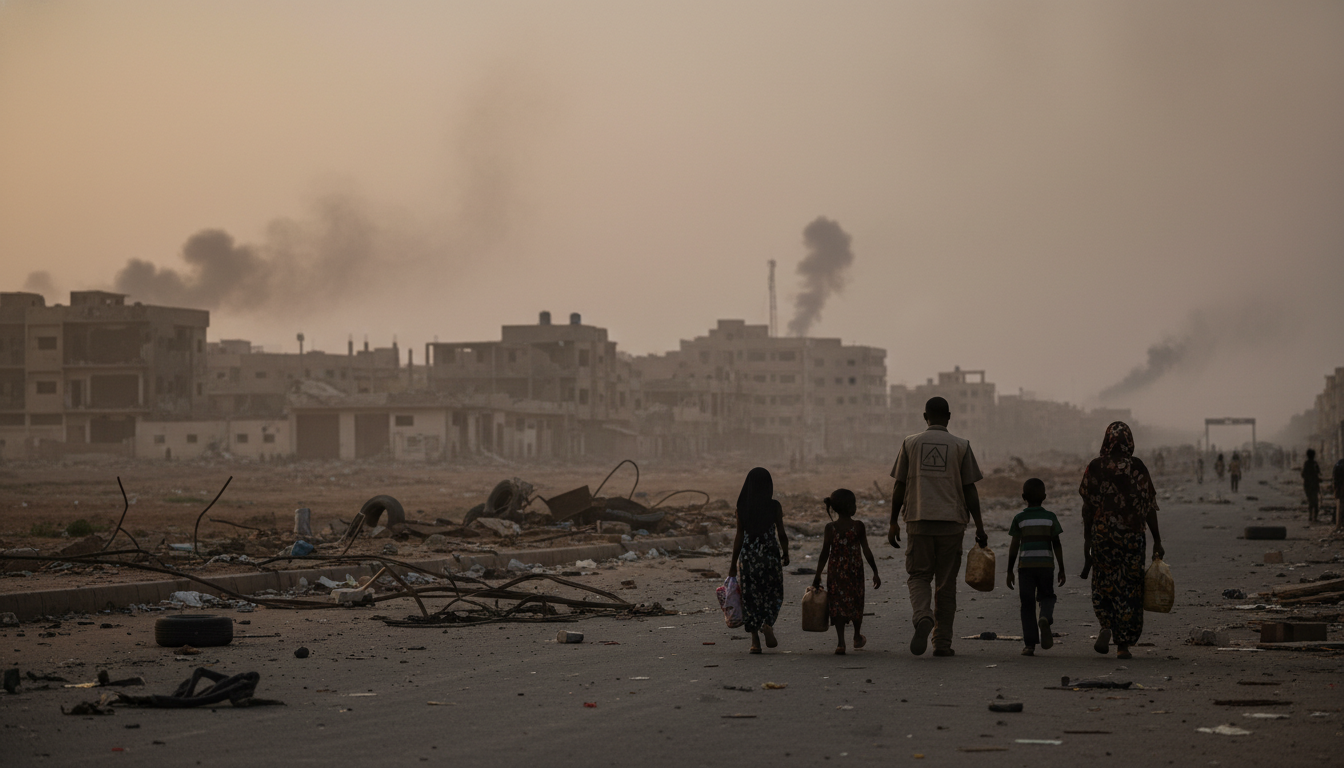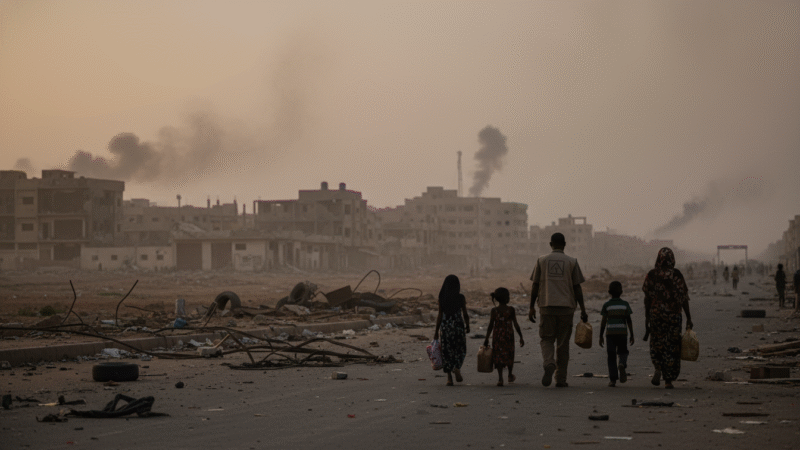Executive Summary
- Since April 2023, Sudan has been engulfed in a war between the Sudanese Armed Forces (SAF) and the Rapid Support Forces (RSF). The conflict has spiraled into one of the world’s worst humanitarian crises.
- At its core, this is a struggle over power, security-sector reform, and the integration of RSF under state command—intertwined with economic interests and regional alignments.
- Today’s picture: widespread abuses, collapsing public services, mass displacement, acute food insecurity, and credible reports of atrocities in Darfur—most recently following RSF’s takeover of El Fasher.
- The pathway forward is unlikely to be a single “grand bargain.” It will require parallel tracks: a monitored ceasefire, separation of forces, humanitarian access, phased security reform and integration, a civilian-led political process, and transitional justice.
1) How did Sudan get here? The layered roots of the crisis
- Darfur’s legacy of violence: The RSF originated from the “Janjaweed” militias during the Darfur war in the 2000s—groups accused of grave abuses. RSF later became a legalized paramilitary with its own resources and command structure.
- A fragile post-2019 transition: The fall of Omar al-Bashir opened the door to reform, but power-sharing between military and civilian factions was fraught, and visions of economic and security reforms diverged.
- The security-sector reform knot: Disputes over the timeline and command hierarchy for integrating RSF into the national army hardened mistrust between SAF and RSF.
- War economy incentives: Gold, informal customs, affiliated companies, and border crossings became financial lifelines that entrenched both sides.
- Regional dimension: UN and independent media reports have cited external supplies—arms, drones, financing—to various actors, complicating and prolonging the war.
2) Who are the main actors?
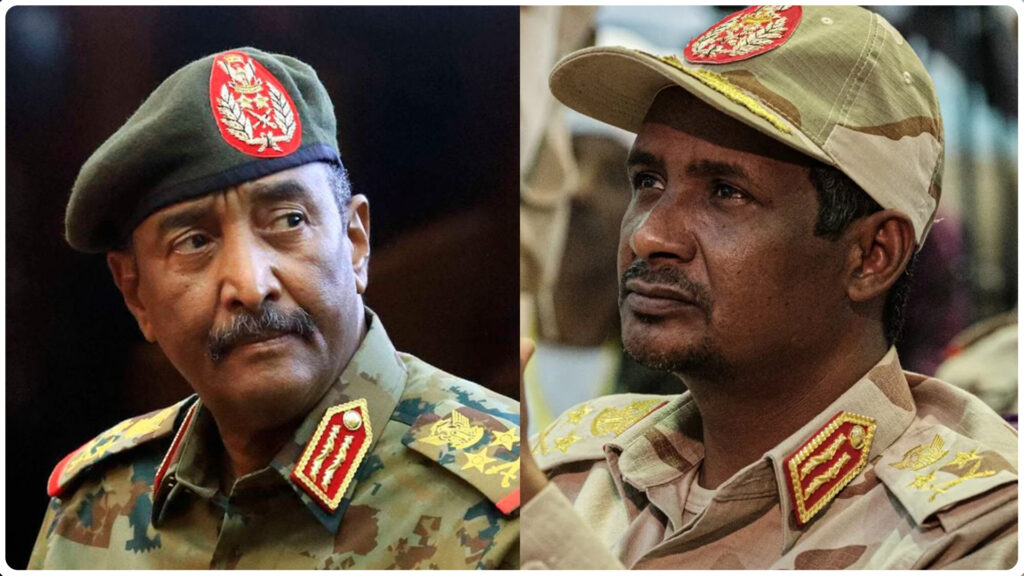
- Sudanese Armed Forces (SAF): Led by Gen. Abdel Fattah al-Burhan; retains air power and formal military structures, with influence in the east, north, and parts of central Sudan.
- Rapid Support Forces (RSF): Led by Mohamed Hamdan Dagalo (“Hemeti”); relies on urban warfare and rapid maneuver, with strongholds in western and central regions, especially Darfur.
- Local armed allies: Some factions that signed the 2020 Juba Peace Agreement aligned with SAF in Darfur.
- Civilians: The principal victims. UN and rights groups report widespread violations, including ethnically motivated attacks in Darfur, extrajudicial killings, sexual violence, looting, and siege tactics.
3) A concise timeline (2019–2025)
- 2019: Bashir ousted; a turbulent civilian–military transition begins.
- Oct 2021: The civilian–military partnership collapses, deepening fragility.
- Early 2023: Integration and reform disputes between SAF and RSF escalate.
- 15 April 2023: Full-scale fighting erupts in Khartoum and beyond.
- Late 2023: Reports of mass atrocities grow, especially in West Darfur (El Geneina); UN warns of ethnically targeted violence.
- 2024: War broadens; El Fasher faces a prolonged siege, with repeated UN warnings of catastrophe.
- Oct 2025: Multiple reports indicate RSF’s capture of El Fasher; serious allegations follow of mass executions and crimes against humanity, alongside SAF withdrawal.
Note: Figures remain fluid due to communications blackouts and access restrictions.
4) The current humanitarian and security picture
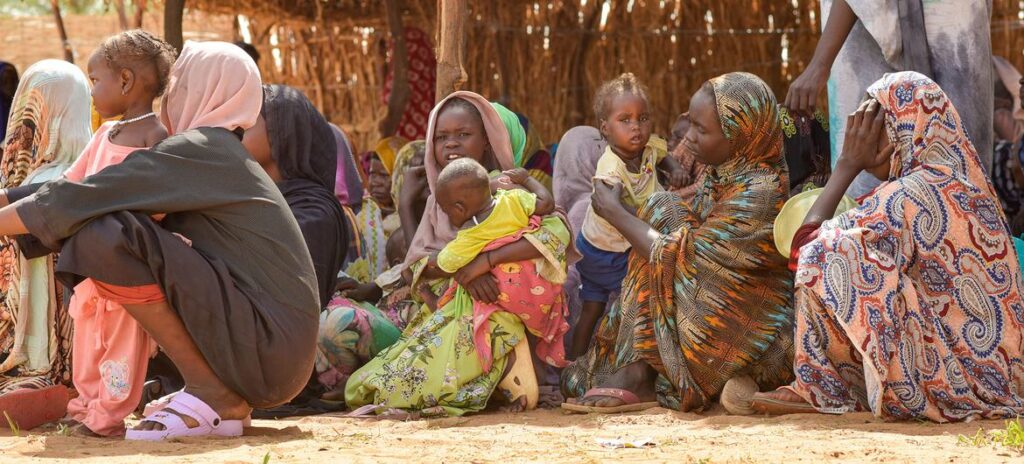
- Patterns of abuse: Repeated reports of extrajudicial killings, mass executions, ethnically targeted attacks, sexual violence, looting, and starvation tactics—particularly in Darfur. In El Fasher, satellite imagery–assisted analyses and testimony point to mass killings following RSF’s entry.
- Casualties and displacement: UN reporting points to very high casualties with verification challenges. Internal displacement and refugee flows rank among the world’s largest since 2023. For ongoing situation updates: OCHA/ReliefWeb, UNHCR.
- Food insecurity and health: Tens of millions face acute food insecurity, with famine risk in besieged pockets. Health facilities are devastated; preventable disease and child malnutrition are surging. See WFP and IPC.
- Humanitarian access: Severely constrained by insecurity, administrative barriers, and logistics. UN calls for focus on safe corridors and independent monitoring. See OHCHR and OCHA.
5) The war economy: why the violence persists
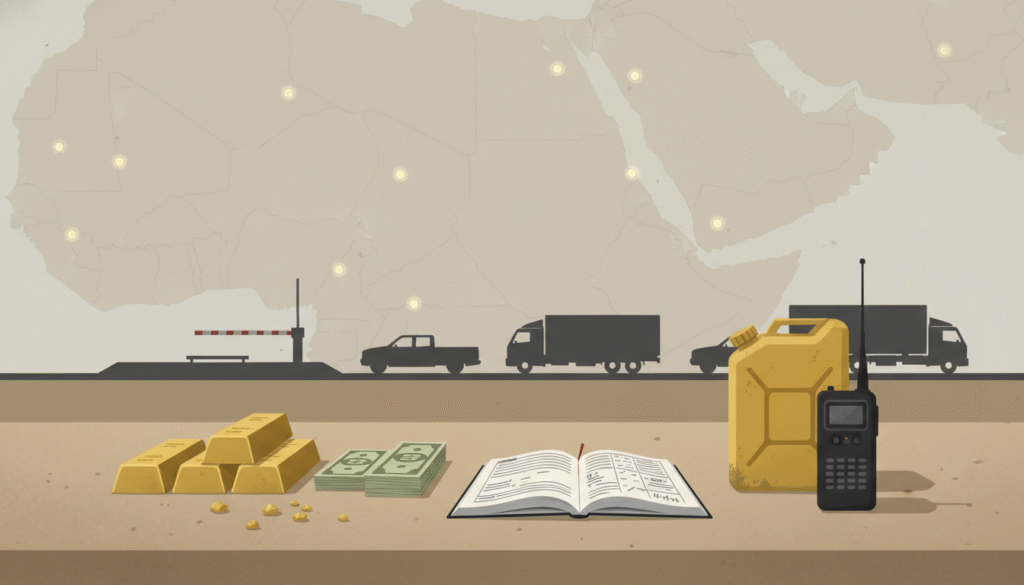
- Gold, border taxation outside state control, and affiliated enterprises fund the war effort.
- A growing gray economy and smuggling networks thrive as formal state revenue collapses.
- Any viable roadmap must combine financial oversight and calibrated incentives with targeted sanctions on spoilers.
6) Where diplomacy and relief efforts stand
- UN track: The UN and the High Commissioner for Human Rights consistently condemn violations, call for humanitarian access, and urge independent investigations and accountability. See OHCHR.
- Humanitarian system: OCHA and UN agencies coordinate food, medical, and WASH responses, but access and scale remain insufficient. See OCHA/ReliefWeb.
- Regional and international positions: The African Union, IGAD, the EU, the United States, the United Kingdom, and Arab states have urged a ceasefire, civilian protection, and a renewed political process.
- Independent verification: Satellite imagery and academic labs have aided documentation of abuses, strengthening calls for accountability.
7) A realistic, multi-track roadmap
- Phase 1: A monitored humanitarian ceasefire
- Independent field monitoring; immediate lifting of sieges; safe humanitarian corridors.
- Protection of hospitals and civilian infrastructure; guarantees for aid workers.
- Phase 2: Temporary security arrangements and separation of forces
- Stabilize frontlines; verified maps of deployment; prisoner exchanges; confidence-building steps.
- Curb rearmament through controls on weapons and financing flows.
- Phase 3: Phased security-sector reform and integration
- One chain of command under the state on a credible timeline; professional vetting of ranks and records.
- Restructuring of defense, intelligence, and policing under civilian oversight.
- Phase 4: A civilian-led political transition
- An interim civilian government with clear executive authority; a narrowly mandated national security council.
- Inclusion of regional constituencies and local communities to reduce exclusion and revenge dynamics.
- Phase 5: Transitional justice and accountability
- Systematic documentation; openness to independent investigations; a justice track calibrated not to derail the ceasefire.
- Reparations and community-based recovery for victims and affected areas.
- Phase 6: Drying up the war economy with conditional incentives
- Financial oversight over gold, informal taxation, and border revenues.
- Significant, phased international support tied to measurable progress; targeted sanctions on spoilers.
8) What could derail this pathway?
- Rapid shifts in battlefield dynamics reducing incentives to negotiate.
- Fragmentation within camps and the proliferation of local militias beyond command and control.
- Conflicting agendas among external backers and renewed weapons pipelines.
- Weak monitoring mechanisms or the politicization of humanitarian aid.
9) Practical recommendations for policymakers and donors
- Consolidate disparate mediation channels into a coordinated track with milestones and regular progress reviews.
- Scale up emergency funding with strong transparency and anti-diversion measures; expedite clearances and logistics.
- Tie political recognition and financial support to tangible benchmarks: ceasefire compliance, open corridors, and civilian protection.
- Invest in independent verification—satellite analysis, rights monitoring—to preserve evidence and deter impunity.
- Front-load restoration of essential services—health, water, power, education—to anchor community stability.
Conclusion
Sudan’s war is the culmination of institutional vacuum, a militarized political arena, and a war economy years in the making. Exiting this crisis requires parallel tracks, not a single accord: a verifiable ceasefire, interim security arrangements, phased integration and reform, a civilian-led transition, and credible justice—underpinned by unified international pressure and well-structured humanitarian and development support tied to real-world benchmarks. Only then is there a path from crisis management to a durable peace.

